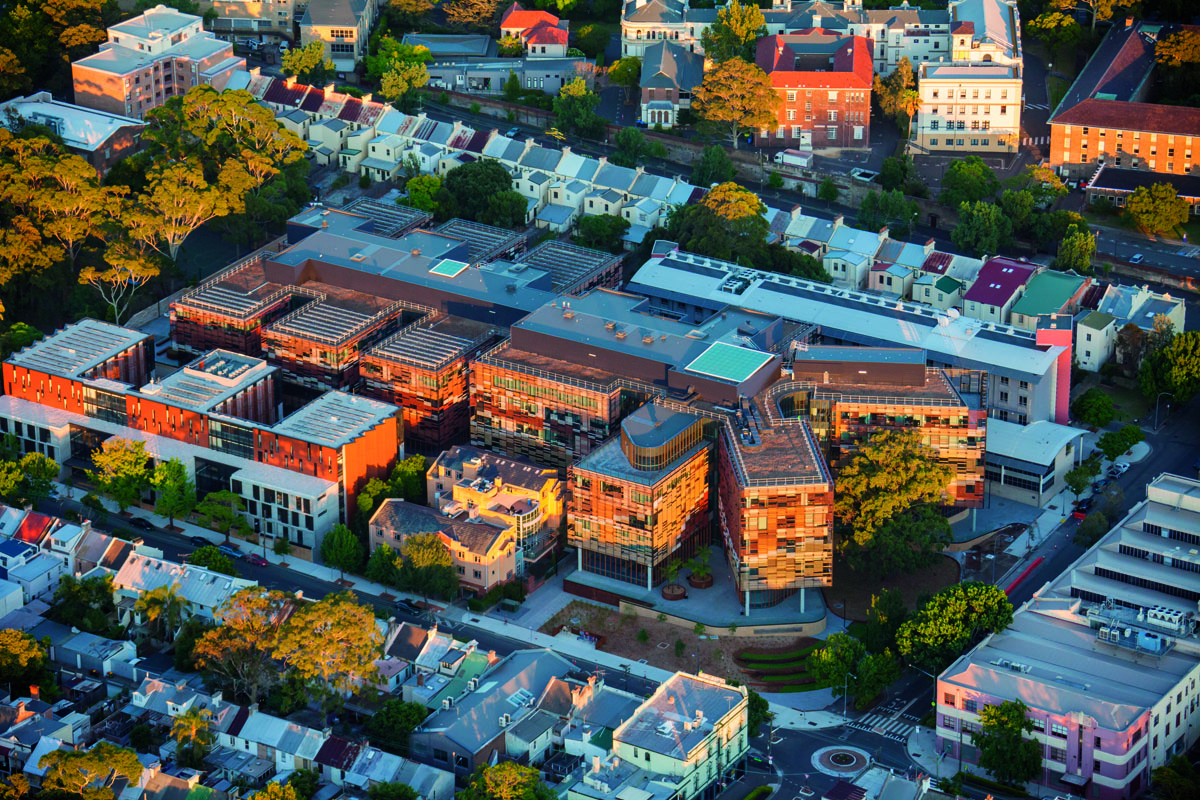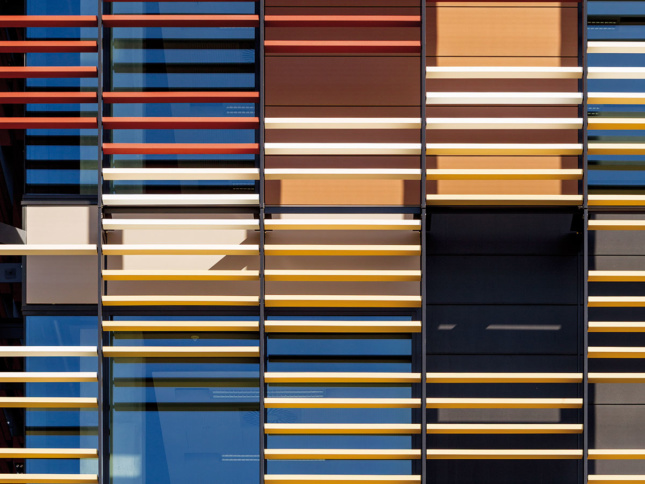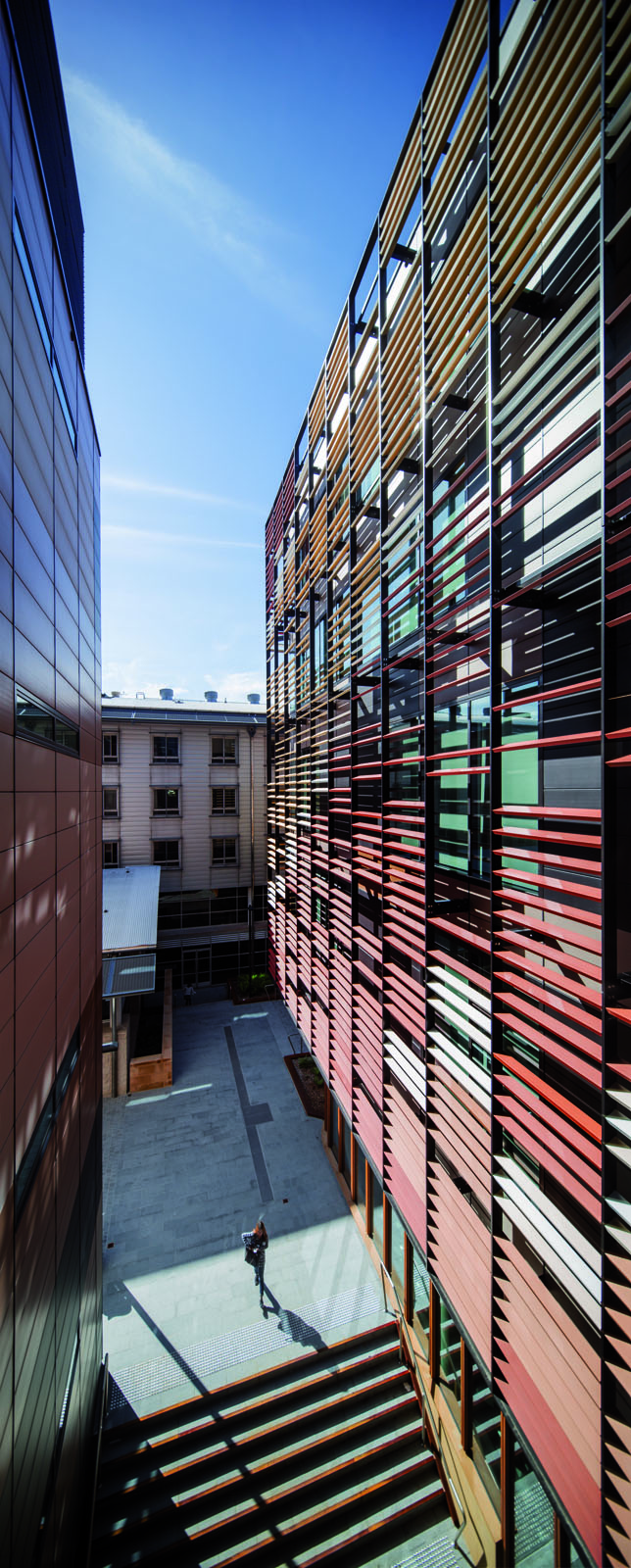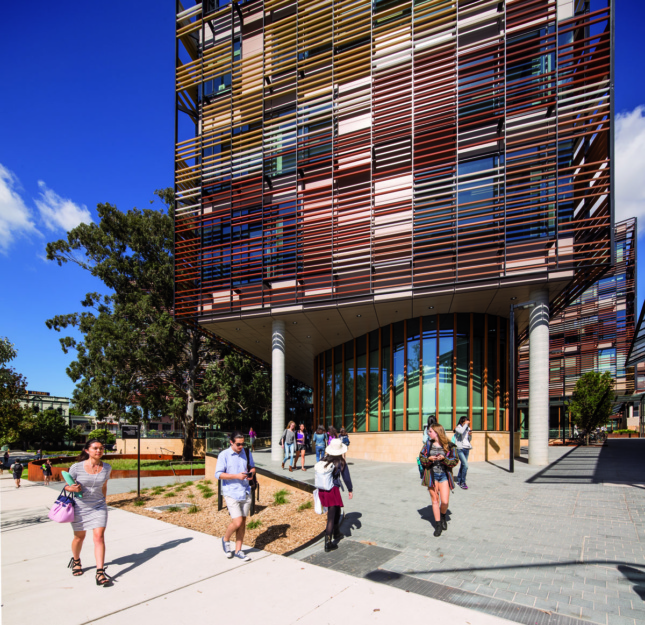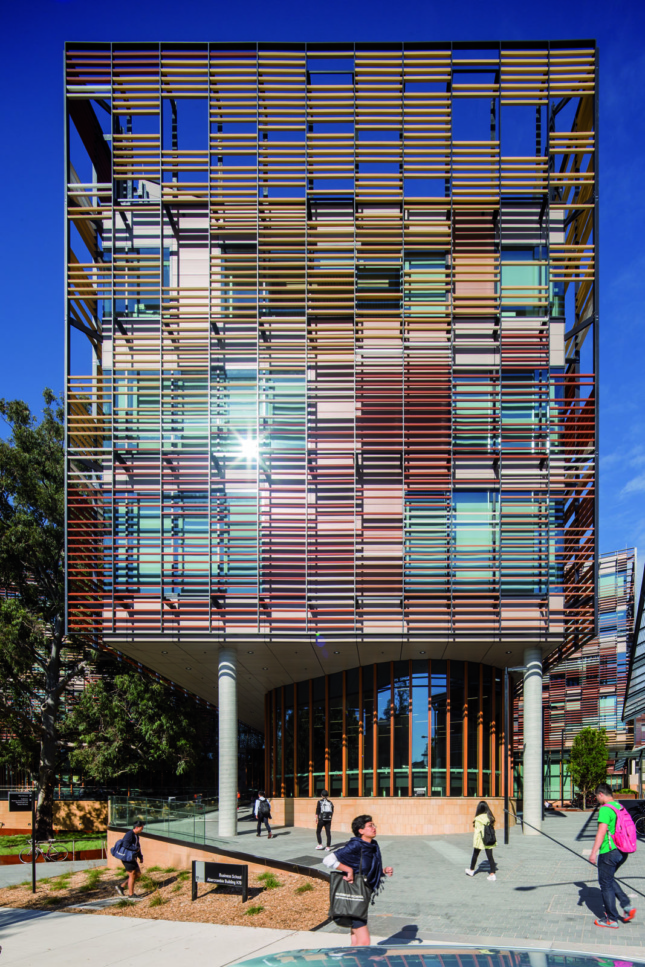Nestled into a small inner-city suburb of Sydney sits a new business school facility for the University of Sydney. The building, designed by Woods Bagot across three of their fifteen global offices, consolidates facilities that were once scattered across nine buildings on campus while supporting a student body of over 6,000 students. The massing of the building weaves into the context of the neighborhood, unified by a terra-cotta cladding system with carefully selected coloration that help to blend in with surrounding Victorian-era worker’s terraces.
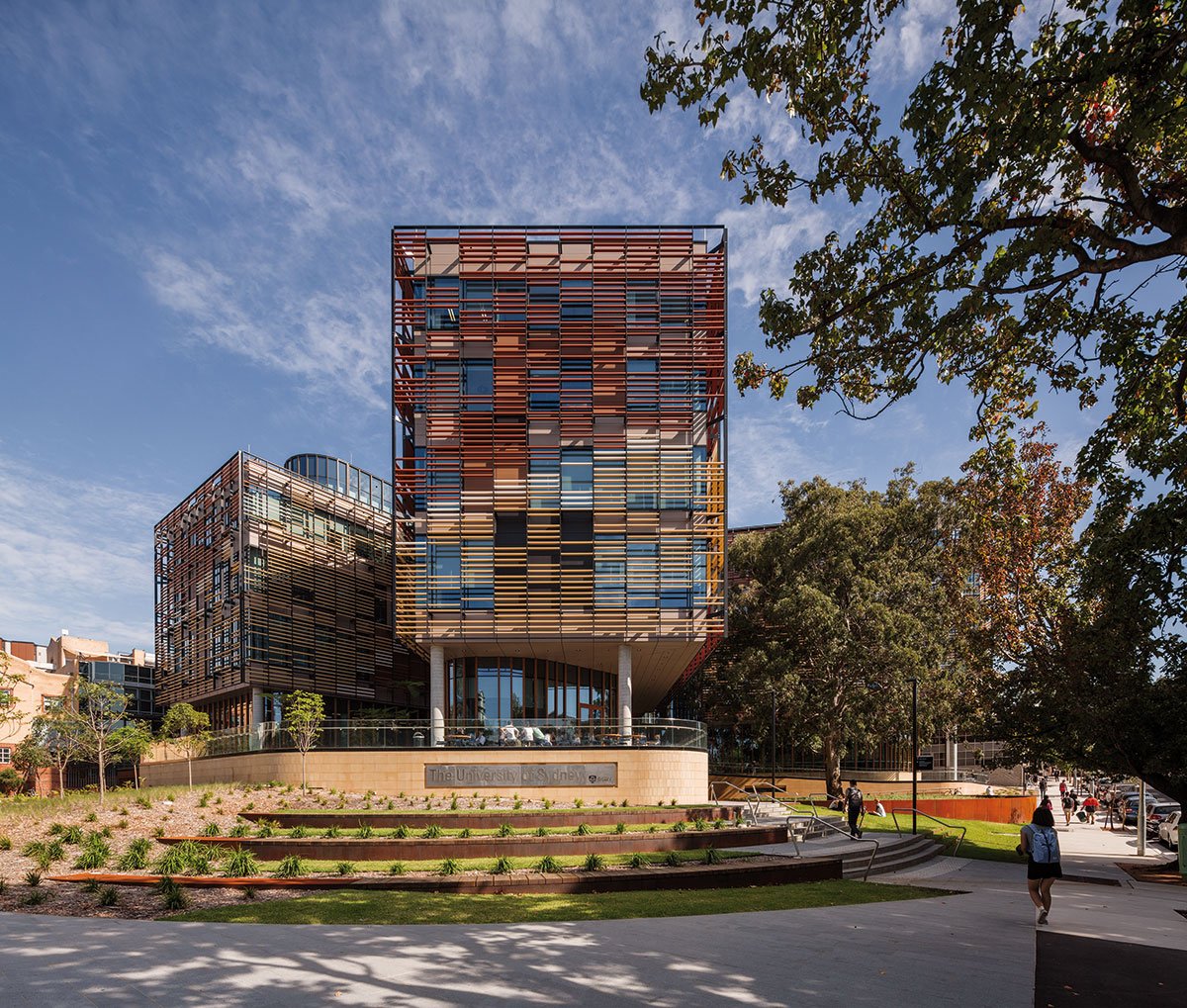
The building envelope of the University of Sydney’s Abercrombie Business School is composed of three components: an all-glass undulating base level, a window wall enclosing classrooms and offices, and an exterior screen assembly composed of terra-cotta baguettes.
Matt Stephenson, senior associate at Woods Bagot, said a primary focus of the design team was developing a project that was contextually sensitive. “With the enclosure, the challenge was to maintain a singular identity and dynamic expression for the overall academic building.” The team conducted color theory research, arriving at a scheme that balances “background” coloration of insulated metal panels on the building envelope with “foreground” terra cotta screen colors. A color palette of unglazed and white glazed terra cotta was selected which allows the two facade layers to visually merge, creating a texture inspired by sandstone local to the area.
The terra-cotta screen is composed of repetitive baguettes, dynamically arranged in response to program and solar orientation. The architects “unfolded” each elevation, designing orthogonally by setting up a series of operations that began with a uniform screen density. They overlaid a solar analysis and a programmatic analysis of the base building skin that differentiated between room type and activity level. This zoning of the elevation helped inform where baguettes could be eliminated within each facade. In active zones, the architects deleted over 35 percent of the baguettes to allow light and air into the active program spaces. Additional baguettes were culled in response to eye-height views, localized areas of seating, and areas of the facade that were obstructed by adjacent buildings. The last step was to rotate the baguettes on elevations that received the most severe sunlight in order to increase their ability to act as a sunshade while maintaining visual porosity. The result was a dynamic system assembled from standard componentry.
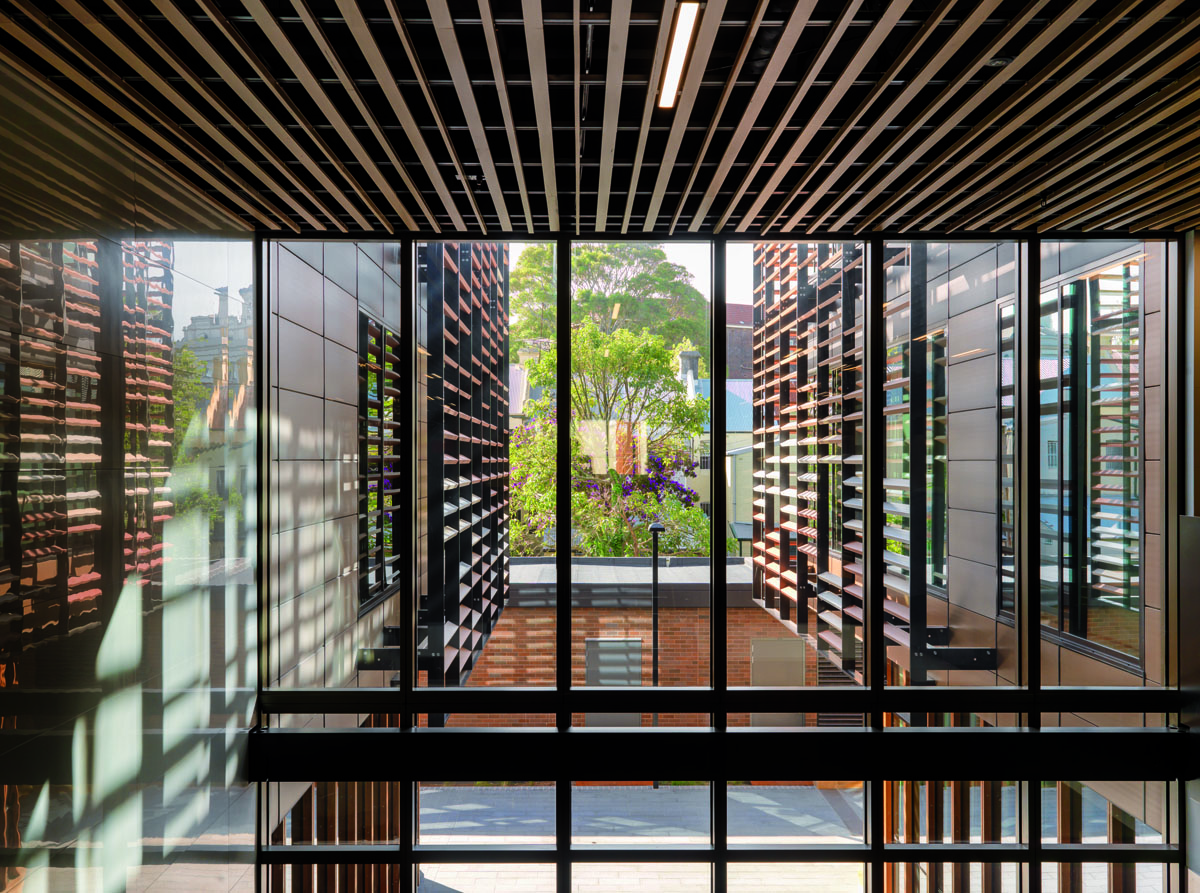
The project evolved between Woods Bagot’s Sydney office, located 30 minutes from the site, and their New York and San Francisco offices. The project teams would share design models on a daily basis, which, thanks to time zone differences, allowed for nearly continuous project development. Stephenson said firm benefits from expertise in multiple offices around the world, and that in the years since the early design phases of USBS, cloud-based model sharing has significantly improved, enabling for more streamlined workflows.
